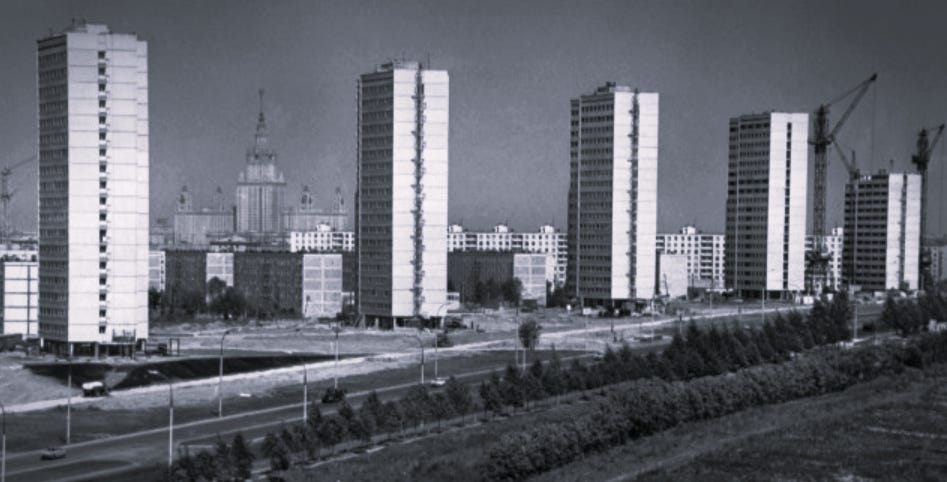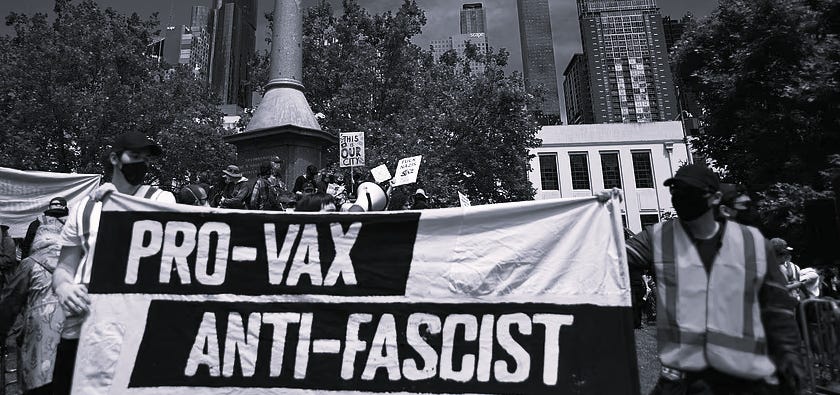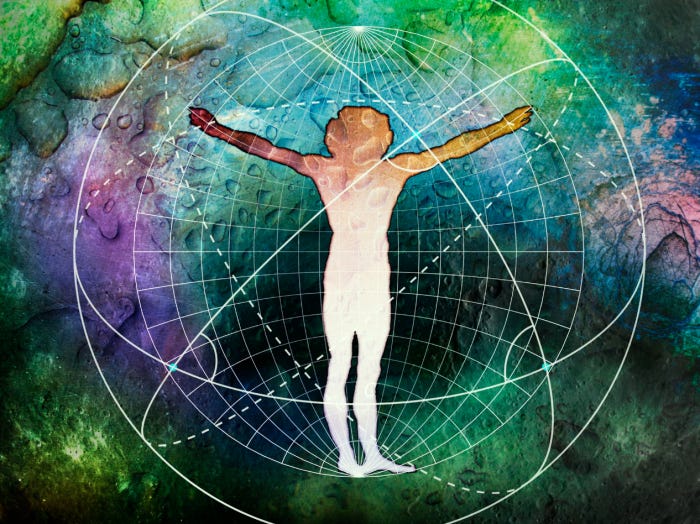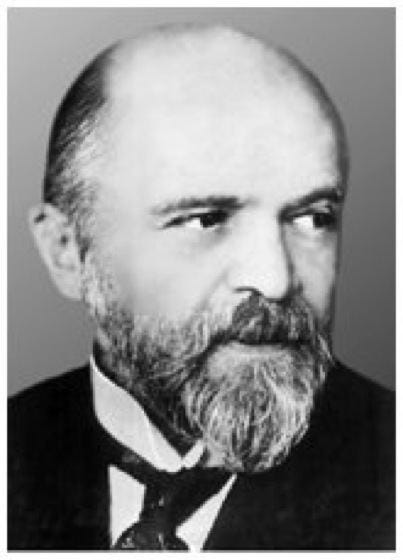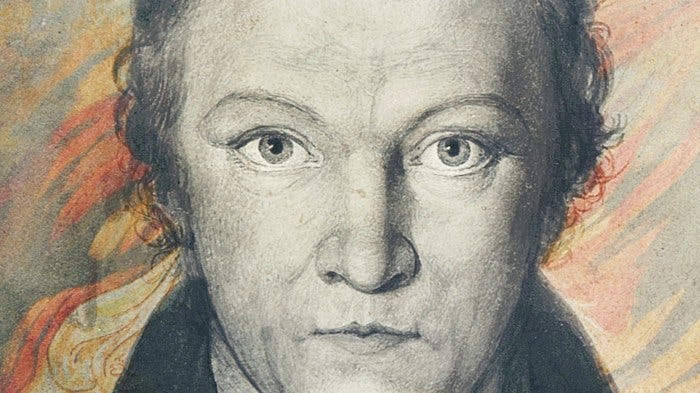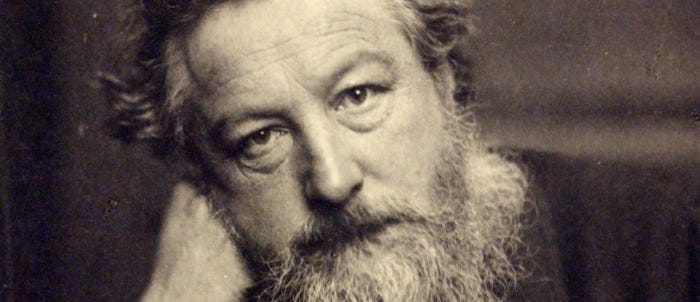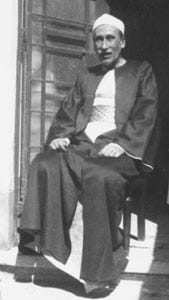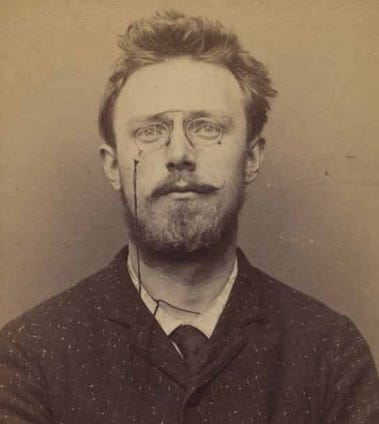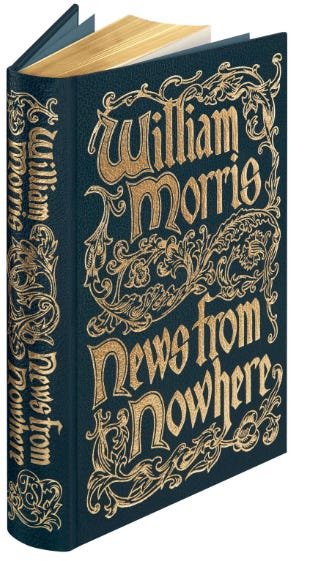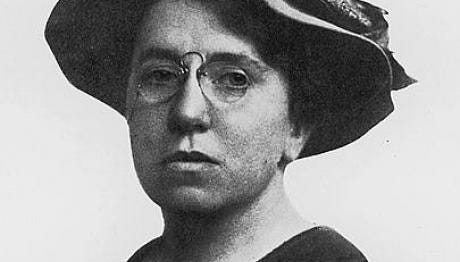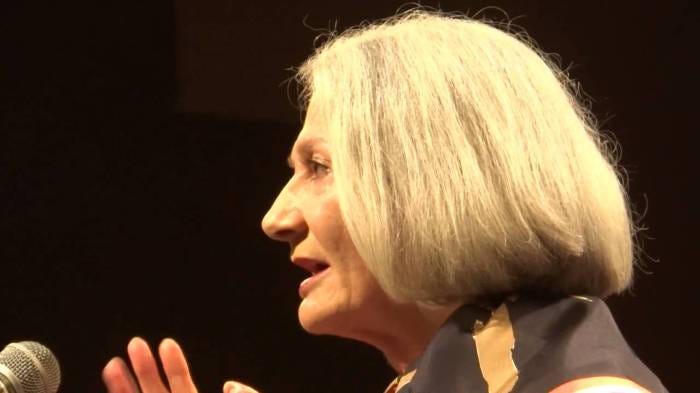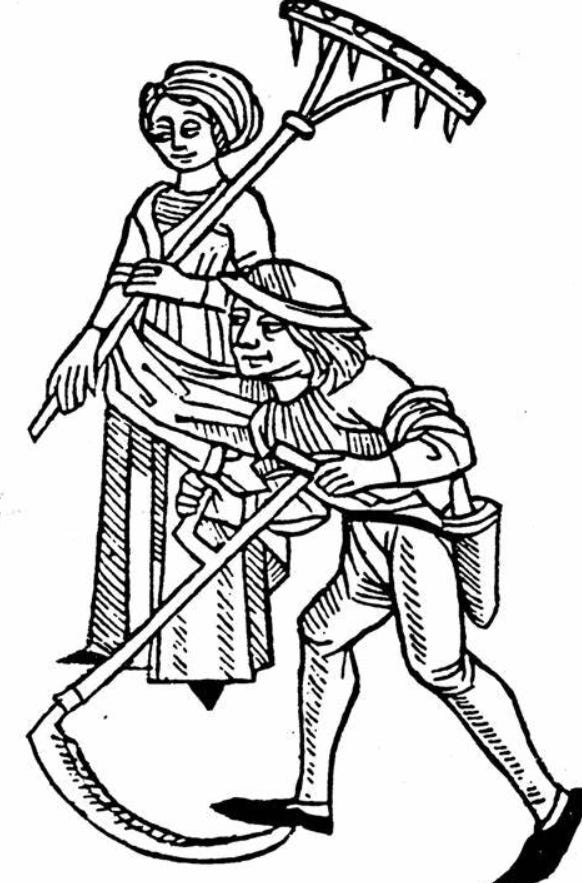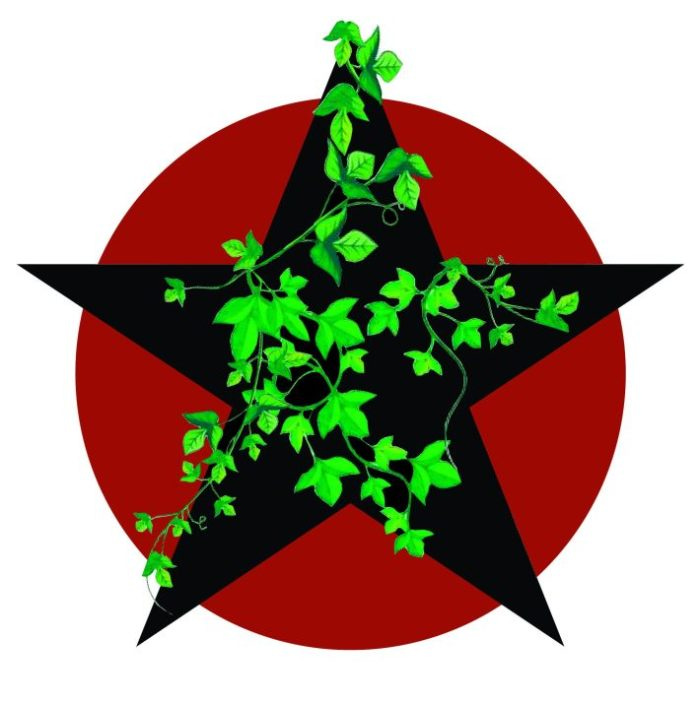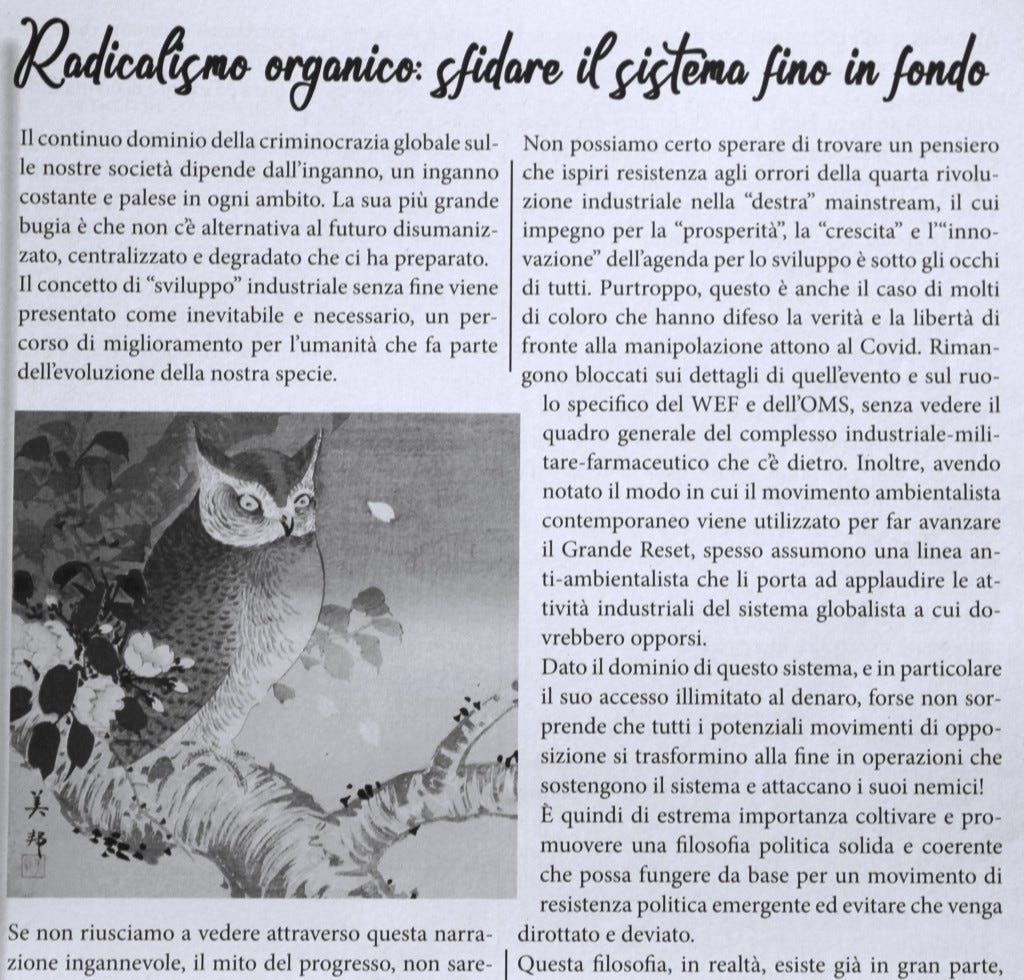The global criminocracy’s ongoing domination of our societies depends on deceit – constant, blatant deceit in every sphere.
Its biggest lie of all is that there is no alternative to the dehumanised, centralised and degraded future it has lined up for us.
It depicts never-ending industrial “development” as inevitable and necessary, a path of improvement for humankind that forms part of our species’ evolution.
If we cannot see through this deceitful narrative, the myth of Progress, we are not going to be able to understand or challenge the criminocracy’s techno-totalitarian agenda.
This, of course, has long been a big failing of the “left”.
Having apparently failed to notice the extremely close links between industrialism and the money power it supposedly opposes, the “left” has enthusiastically embraced a “progressive” approach that aids the advance of the juggernaut of development, now additionally swallowing the absurd claim that this disastrous and ever-accelerating process of destruction can magically become “sustainable”.
The changes in human behaviour that were needed to turn us into helpless victims of the Machine have generally been made under the “progressive” banner.
Old-fashioned values had to be swept away, traditional ways of living abandoned, colourful and distinctive cultures eliminated to enable the construction of grey and uniform modernity.
The “progressive” programme even involves the denial of important aspects of physical reality.
It regards it as “naïve” to be aware of human belonging to nature, “dangerous” to understand that we are born with innate qualities and not as blank slates on which can be written the demands of our industrial slavemasters and “transphobic” to insist that there is such a thing as a woman.
The attitudes of the “left” are so deeply shaped by “progressive” industrial assumptions that it does not represent a real opposition to the system – and, in my opinion, never will do so.
What other possible opposition can we identify?
The “green” movement should be leading the charge against industrialism and its myth of Progress.
But much of it has been turned round 180 degrees and transformed into the climate-obsessed marketing wing of the “renewable” energy industry.
We certainly cannot hope to find thinking that inspires resistance to the horrors of the Fourth Industrial Revolution on the mainstream “right”, whose commitment to the “prosperity”, “growth” and “innovation” of the development agenda is paraded for all to see.
Sadly, this is also the case for many of those who stood up for truth and freedom in the face of the Covid manipulation.
They remain stuck on the details of that one event, and the specific role of the WEF and WHO, and fail to see the overall picture of the industrial-military-pharmaceutical complex behind it.
Moreover, because they have noticed the way in which the contemporary environmentalist movement is being used to advance the Great Reset, they often take an anti-environmentalist line which leads them to applaud the industrial activities of the globalist system they are meant to be opposing.
Given the dominance of that system, and in particular its unlimited access to money, it is perhaps unsurprising that all potential opposition movements seem to eventually turn into operations that support the system and attack its enemies!
It is therefore of utmost importance to nurture and promote a solid and coherent political philosophy that can act as a foundation for an emerging political resistance movement and prevent it from being hijacked and diverted.
This philosophy already largely exists, in fact, although there is a further dimension that needs to be added, as I will explain later.
It is, however, a hidden philosophy, an underground river of thought not visible from the streets and shopping malls of the modern world.
I call this philosophy “organic radicalism” and in 2019 I launched a website which features profiles of more than 90 thinkers whom I regard as belonging to this tradition. [1]
These thinkers are not necessarily themselves invisible – it is, rather, the multiple interconnections between the thinkers and the overall coherence of the organic radical idea that have been hidden from view.
I would say that this idea is, at its heart, just traditional human wisdom – the values, ethics and common sense that had to be pushed aside to make way for the onward march of Profit and Progress.
It is also the understanding that everything is connected, forms part of one reality, in contrast to the fragmented outlook favoured by modernity.
So the orgrad thinkers include, for example, a couple of ancient philosophers who presented the holistic vision of reality common to all pre-modern thinking and stressed the wholeness and essential rightness of the cosmos, the idea of natural organic order.
The Taoist Chuang Tzu, who lived in China 2,300 years ago, asked: “If the nature of everything under Heaven is not distorted, if the world’s Virtue is not despoiled, then what need is there to govern the world?”
And Plotinus, the Greek philosopher born and raised in Egypt in the third century AD and who spent the last part of his life in Rome, wrote: “The Universe is a self-accordant entity, its members everywhere clashing but the total being the manifestation of a Reason-Principle”.
The similarity of their philosophies, arising from completely different cultures, is itself a manifestation of the underlying universal reason and order that they were describing.
Some of those included on the organic radical site present this same understanding in scientific terms.
The German vitalist Hans Driesch (pictured) was one of the first non-Jewish university professors to be stripped of his post when the Nazis came to power in 1933.
He explained his holistic vision by stating: “The object is not the mere sum of its attributes: it is their unity – it is all the attributes together”.
And British scientist Kit Pedler wrote: “Scientists who try to take nature to bits … and claim in the end that they will understand the whole of nature because they understand all of its parts are called ‘reductionists’.
“Scientists who have taken nature to bits and then claim that their study of the parts reveals a whole which is greater than the sum of the parts are called ‘holists’”.
As another scientist, Fritjof Capra, explains, this kind of analysis complements, rather than contradicts, metaphysical or spiritual interpretations.
He says that his philosophy is one in which “the cosmos is seen as one inseparable reality – for ever in motion, alive, organic; spiritual and material at the same time”.
The same belief was being expressed 500 years ago by physician and nature philosopher Paracelsus, another organic radical inspiration.
He said: “Nature, made of the Universe, is one and its origin can only be the eternal Unity. It is a vast organism in which natural things harmonise and sympathise between themselves”.
Animating everything, he said, was “the vital energy of the Universe (Spiritus Mundi)”, a “fundamental, invisible, vital, vitalising force”.
The 17th century English revolutionary Gerrard Winstanley, who was acquainted with Paracelsus’s ideas, wrote about “the law of nature” which “does move both man and beast in their actions; or that causes grass, trees, corn and all plants to grow in their several reasons; and whatsoever any body does, he does it as he is moved by this inward law”.
A century later the artist and poet William Blake (pictured) was challenging the new industrial world with his own holistic vision, which emphasised the sacredness and interconnectedness of all life.
“Every thing that lives, Lives not alone, nor for itself”, he wrote. “Every thing that lives is Holy”.
And around the same time in Germany, Novalis was using the term “magical idealism” to describe his concept of the world soul, in which all of nature was seen as a single organism.
As industrialism tightened its grip on Europe, this holistic concept of nature necessarily developed into a political critique of society.
We can see this with the “anti-capitalist Romanticism” identified by Michael Löwy as flourishing in central European Jewish intellectual circles before the First World War.
He says their shared outlook revolved around “a cultural critique of modern capitalist civilization in the name of pre-modern or pre-capitalist values”.
They were revolting “against the quantification and mechanisation of life, the reification of social relationships, the dissolution of community and, above all – the disenchantment of the world”.
Generally, anti-industrialist thinking occupies, needless to say, a central place in organic radical thought.
Today dismissed as marginal, it in fact boasts an impressive political heritage and has been expounded by important thinkers like John Ruskin, Henry David Thoreau, William Morris, Leo Tolstoy, Jacques Ellul and, towards the end of his life, Guy Debord.
Morris (pictured), for instance, famously stated: “Apart from the desire to produce beautiful things, the leading passion of my life has been and is hatred of modern civilization”.
Tolstoy, for his part, condemned the factory system and repeatedly warned that the Russian people should stay on the land, and avoid the industrial civilization of the West.
This same insight surfaced in India with the anti-industrialism led by Mohandas Gandhi and the Kumarappa brothers, which identified an alternative to Western capitalism or socialism in what they called “villagism”.
Gandhi, influenced by Tolstoy, wrote in 1909: “Machinery has begun to desolate Europe. Ruination is now knocking at the English gates. Machinery is the chief symbol of modern civilization; it represents a great sin… Railways accentuate the evil nature of man. Bad men fulfil their designs with greater rapidity”.
A parallel thread in anti-industrial spirituality emerged with the Perennialist or Traditionalist movement founded by René Guénon and Ananda Coomaraswamy.
While best known now for their metaphysical writing, they were both appalled by Western imperialism and the way in which it everywhere imposed its exploitative, productivist, industrial way of life.
In his 1927 book The Crisis of the Modern World, Guénon (pictured) described the concept of “civilization” as a pretext designed to fool the public, “mere moralistic hypocrisy, serving as a mask for designs of conquest or economic ambitions”.
I should also mention the considerable anarchist influence on organic radicalism, with many representatives of that political tradition featured on the site.
But they are not included simply because they are anarchists – even though I have a background in the anarchist movement and still call myself an anarchist, despite my serious differences with many of those today using that label.
They are there because they have something to contribute to the wider organic radical perspective.
Peter Kropotkin, for instance, not only described law and capital as twins who had “advanced, hand in hand, sustaining one another with the suffering of mankind”, but also wrote that Mutual Aid, Justice and Morality were a “universal law of organic evolution” rooted in our minds “with all the force of an inborn instinct”.
German-Jewish anarchist Gustav Landauer condemned industrial capitalist “unculture” and has been described as representing “a left-wing form of the völkisch current in thought”.
Emma Goldman, mainly remembered today for her feminism, published a journal called Mother Earth and equated the anarchist ideal with “natural law… which asserts itself freely and spontaneously without any external force, in harmony with the requirements of nature”.
The English anarchist intellectual and poet Herbert Read condemned mechanical civilization and declared: “Deep down my attitude is a protest against the fate that has made me a poet in an industrial age”.
What fascinates me is the way that the various strands of thinking intertwine and interlock, lending to organic radicalism a solidity and cohesion that might appear surprising for a philosophy that is not officially deemed to exist!
In general, spirituality, anti-industrialism and opposition to the dominant order come together time and time again, to the point that they appear to be one and the same thing.
The usual political-philosophical firewalls melt away when you know that the Perennialist Guénon was introduced to Sufi spirituality by the anarchist Ivan Aguéli (pictured); that fellow Perennialist Coomaraswamy was an anarchist; that Carl Jung was greatly influenced by the anarchist Otto Gross and was a friend of another anarchist, Herbert Read.
I am intrigued by the way that neurobiologist Constantin von Monakow’s aim of “a naturalization of morality” is so close to the anarchism set out by Kropotkin, particularly in his last, uncompleted, book Ethics: Origin and Development, in which he described nature as “the first ethical teacher of man”.
My own lifelong sense of affinity with the Middle Ages feels vindicated by the fact that it was shared not just by Kropotkin, who described the medieval city as “a natural growth in the full sense of the word”, but also by the sociologist Ferdinand Tönnies – an important organic radical thinker who compared the healthy organic Gemeinschaft (community) of that previous period with the artificial Gesellschaft (society) of modern times.
Attraction to the Middle Ages was also a corollary of Ruskin and Morris’s distaste for industrial modernity, with the Gothic tradition representing for them an aesthetic expression of a culture rooted in nature and organicity.
Morris was greatly inspired by the 1885 novel After London written by another orgrad inspiration, Richard Jefferies.
This was an early work of post-apocalyptic science fiction, in which industrial civilization has collapsed and the capital of the British empire has disappeared beneath an oozing, toxic swamp, to be replaced by something resembling the medieval world.
Morris wrote to a friend that “absurd hopes” filled his heart as he read the book, adding: “I have no more faith than a grain of mustard seed in the future history of ‘civilization’, which I know now is doomed to destruction, probably before very long: what a joy it is to think of!”.
Indeed, it is thought that Jefferies’ book inspired Morris’s own novel News from Nowhere, which was published five years later, in 1890, and was described by Kropotkin – yet another connection! – as a “romance of the future” and “perhaps the most thoroughly and deeply Anarchistic conception of future society that has ever been written”. [2]
The organic radical yearning for the Middle Ages is not really backward-looking at all, but is looking forward to an uncorrupted future, free from the dark rule of industrial criminocracy.
Löwy explains this with regard to Walter Benjamin, whose deconstruction of the ideology of progress was, he says, carried out not in the name of conservation or of restoration, but of revolution.
“The archaic societies of Urgeschichte [the distant past] feature a harmony between man and nature which has been destroyed by ‘progress’ and is in need of reinstatement in the emancipated society of the future”.
The writer Patrick Marcolini makes the same point regarding the “medieval inspiration” that he identifies behind the thinking of Debord and his fellow Situationists.
He writes: “All the types of gift-based sociality – friendship, love, hospitality, mutual aid and solidarity – were the relational forms which most faithfully prefigured the society which the Situationists wanted to reach by revolution. In this, medieval civilization offered them a real model”.
There are so many interconnections between the thinkers featured on the orgrad site that I can only scratch the surface here.
Gandhi was influenced not only by Tolstoy, but also by Ruskin, Thoreau and Kropotkin.
Fredy Perlman was inspired by Blake, even using his art to illustrate his own work, and translated Debord’s La Société du spectacle into English.
Tönnies was an influence on Landauer, Martin Buber and Jacques Camatte, who refers approvingly to him in his 1973 essay ‘Against Domestication’.
George Orwell was persuaded to join the International Anti-Fascist Solidarity Committee by Emma Goldman (pictured) and he there came into contact with anarchists such as Read – that friend of Jung – and John Cowper Powys, a writer converted to anarchism by Goldman and also influenced by orgrad thinkers Plotinus, Paracelsus, Goethe, Blake, Ruskin and… Jung!
Suffice to say that if I could present these links in the form of a diagram – a task of which I am totally incapable! – the resulting mesh would physically display the reality of a philosophical tradition that contemporary society refuses to recognise.
Some of those featured on the site have been aware of the ideological overview – Löwy, for instance, as I have already explained.
The late American writer Theodore Roszak, as well as quoting Morris, Kropotkin and Coomaraswamy, called for a “new radicalism” in which “quality and not quantity becomes the touchstone of social value”.
He said “an urgent project of the times” was the resurrection of a “supposedly defunct tradition”, an ancient way of knowing and thinking that he termed “Old Gnosis”, whose experience of nature was one of “living communion”.
Roszak held out the vision of a post-industrial future which would involve “a graceful symbiosis of people and nature, an organic community”.
And fellow American Charlene Spretnak (pictured), now in her late 70s, was greatly inspired by Ruskin and Morris, whose work she discovered by chance while visiting England.
In her 1997 book The Resurgence of the Real she describes “an extraordinary period of discovery for me, a communion that shaped me, somehow, from then on”.
Spretnak identifies an underground philosophy, in opposition to modernity, that surfaces from time to time in history, only to be forced underground again by the dominant system.
She writes: “A substantive tradition stands behind the contemporary resurgence of body, nature, and place, which, if better understood, could be a source of inspiration.
“That lineage includes the Romantic movement, the Arts and Crafts movement, the cosmological and spiritual quests in schools of painting, the counter-modern Modernists, Gandhi’s Constructive Program, and the counterculture”.
She explains that repression of these critiques of modernity is achieved partly through the way in which the historical myth of “progress” is presented.
“The complex transition from the holistic (but hierarchical) medieval worldview to the modern mechanistic one came to be expressed as a simplistic reduction holding great allure: the passage from the Dark Ages to the Enlightenment. Has there ever been such a starkly black and white framing of history?”
As we have seen, the organic radical project aims to reclaim the holistic heritage of the past and use it to inspire the quest for a future outside of the industrial criminocratic nightmare.
But the additional element, to which I referred earlier, is an awareness of how and why the thread of thinking described by Löwy, Roszak and Spretnak has been pushed out of sight.
I explored one aspect of this in an article I wrote six years ago, in July 2018 – the first occasion on which I used the term “organic radicalism”, in fact. [3]
Here I explained how continuous efforts had been made to smear any kind of pro-nature and organic thinking as “Nazi” and thus as unacceptable to the “anti-fascist” left.
This kind of propaganda is, of course, deliberately misleading and one of the main culprits, Alexander Reid Ross, has subsequently been revealed to be linked to the CIA. [4]
The reality is that while the Nazi regime in Germany used nature-loving language to garner support from a nature-loving people, their actual agenda was ultra-industrialist.
Is it a coincidence that the same trick is currently being pulled again by an “environmentalist” movement promoting the new, 21st century, phase of industrial development? I don’t think so.
The reason why genuine environmentalism – pro-nature organic thinking – has to be smeared and attacked is that it represents an obvious threat to the criminocrats’ industrialist project.
If environmentalists were mobilising against phoney “sustainable” technologies, rather than promoting them, the industrialists’ advance would at the very least be slowed down.
More widely speaking, all the attitudes and ways of thinking that form part of the organic radical outlook represent potential barriers to the ongoing march of development and the Great Industrial Racket.
The global criminocrats can’t have people clinging to old-fashioned beliefs in the importance of local community, culture and connection to place!
They can’t allow them to nurture traditional values that might lead them to reject transhumanism, eugenics and artificial food!
They can’t tolerate the revival of ethical codes that regard the selfish pursuit of individual gain as morally wrong, that explicitly reject usury and exploitation!
They can’t put up with people questioning the narrative of Progress, asking whether it is really such a good idea to continue with its programme of ever-accelerating production and destruction!
They can’t stomach the presence in their prison-camp world of people who value freedom more than convenience or social acceptance, who regard speaking the truth as a sacred duty that should never be shirked!
They know that the way of thinking that I call organic radicalism is their enemy and that is why they do their best to make it disappear.
We, for our part, have to take on board this realisation and embrace it within our philosophy.
Organic radicalism is not just the revival of a certain political tradition, but a revival that is very conscious of what it is doing.
It is a political philosophy that understands why its thinking has been marginalised, why it has been deemed unacceptable by those who control contemporary society.
The American radical environmentalist Judi Bari, yet another orgrad inspiration, wrote that basing a political belief system on “ancient native wisdom” is, in the context of today’s industrial society, “profoundly revolutionary, challenging the system to its core”.
This is the task of the organic radical project – to broadcast and amplify this new-old way of thinking, to put it on the map as a real tradition, as a valid and significant political position.
It is only with this solid philosophical grounding that we can hope to grow an effective new movement of resistance against the vile criminocracy.
This article was the talk I gave at the ‘Three Days Against the Techno-Sciences’ gathering in northern Italy on Saturday July 27, 2024, and also appears in Italian translation, as ‘Radicalismo organico: sfidare il sistema fino in fondo‘, in issue 12 of L’Urlo della Terra.
[1] https://orgrad.wordpress.com/a-z-of-thinkers/ All subsequent orgrad references can be found via this page.
[2] https://www.marxists.org/archive//morris/obits/kropotkin.htm
[3] https://winteroak.org.uk/2018/07/10/organic-radicalism-bringing-down-the-fascist-machine/
Source: https://paulcudenec.substack.com/p/organic-radicalism-challenging-the
Article courtesy of Paul Cudenac. https://paulcudenec.substack.com/

